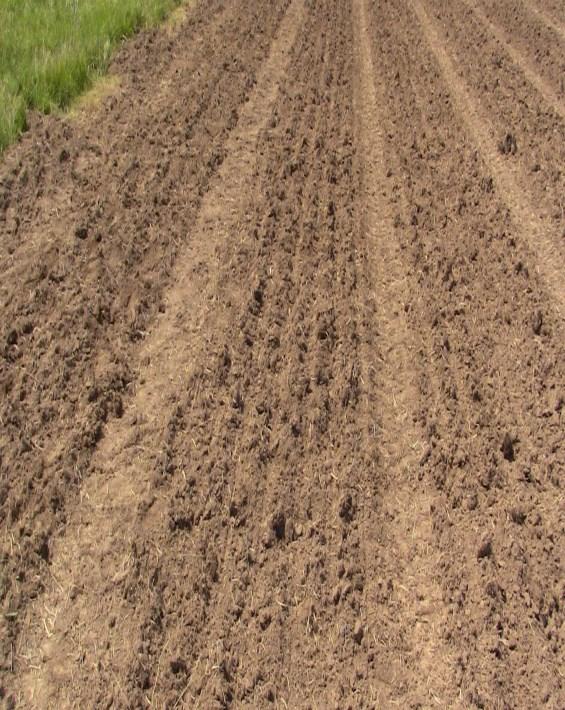Renovating Pastures
 Multiple reasons exist for the need to reseed pastures, such as old stands that are dying out causing bare spots, to reduce number of undesirable weeds and forages, to introduce a new forage species, to control forage-related disorders, among many other causes. When deciding what forage species to seed, pasture conditions need to be assessed, such as current plant species, amount of bare ground, soil type, location, and season. The livestock species and their nutrient needs should also be taken into consideration. In addition, determine the intended use for the pasture in question, whether it be grazing or harvesting for hay or silage then use for grazing.
Multiple reasons exist for the need to reseed pastures, such as old stands that are dying out causing bare spots, to reduce number of undesirable weeds and forages, to introduce a new forage species, to control forage-related disorders, among many other causes. When deciding what forage species to seed, pasture conditions need to be assessed, such as current plant species, amount of bare ground, soil type, location, and season. The livestock species and their nutrient needs should also be taken into consideration. In addition, determine the intended use for the pasture in question, whether it be grazing or harvesting for hay or silage then use for grazing.
Well drained, deep soils lead to successful alfalfa establishment. When preparing to reseed, always implement good establishment methods. Be sure to soil test to determine fertilizer and lime needs. Control competition from existing vegetation and weeds during establishment and be sure to seed at the correct time of year. Use the recommended seeding rates and depth, and allow an adequate establishment period before harvesting or grazing.
 When investing money into new seedings, especially alfalfa for example, it is important to consider the soil type. Alfalfa and alfalfa-orchardgrass mixes should be planted on deep, well-drained soils that are level to gently sloping. Annual ryegrass is highly adaptable to a wide variety of soil types and can tolerate abuse. A producer can use the web soil survey website to determine the soil type on their land and figure out which species perform better with the soil conditions on that land.
When investing money into new seedings, especially alfalfa for example, it is important to consider the soil type. Alfalfa and alfalfa-orchardgrass mixes should be planted on deep, well-drained soils that are level to gently sloping. Annual ryegrass is highly adaptable to a wide variety of soil types and can tolerate abuse. A producer can use the web soil survey website to determine the soil type on their land and figure out which species perform better with the soil conditions on that land.
Different forages require different management practices, and special considerations. For example, endophyte-free fescue cannot withstand continuous grazing and must be given a rest period. However, orchardgrass is one of the grasses that can withstand continuous grazing. Using a forage that fits your grazing program will help your operation be successful.
As new stands of cool-season grasses emerge, producers should not allow animals to graze them immediately. Overgrazing newly seeded areas is one of the major causes of seeding failures along with using the wrong seeding depth. Good management would be: take the first cutting for hay or only use light grazing before a stand reaches maturity. When establishing a new stand, it is vital to control weeds. Weeds can outcompete plants leading to reduced plant population.
Having a good seedbed is essential when planting new seedlings.
Applying herbicide before establishment is a good management practice. New seedings may still have weeds present, and another application of herbicide may be necessary later. During late winter, inter-seeding clover into a stand will help fill bare areas, smothering out weed competition.
When selecting a forage variety, producers will want to choose one that performs well in Kentucky. Variety trials are available at UK Forage or at any UK Cooperative Extension office across the state. The following chart contains suggested seeding dates for commonly used forages in Kentucky. Please remember that soil moisture is needed for seed to germinate. For more information about renovating pastures, see the UK publication AGR-26: Renovating Hay and Pasture Fields.
| Species | Primary Seeding Date | Secondary Seeding Date |
|---|---|---|
| Alfalfa | Mar 15 – May 1 | Aug 1 – Sept 15 |
| Red Clover | Feb 1 – Apr 15 | Aug 1 – Sept 15 |
| White Clover | Feb 1 – Apr 15 | —————— |
| KY Bluegrass | Aug 15 – Sept 15 | Feb 15 – Apr 15 |
| Pearl Millet | May 1 – Aug 1 | —————— |
| Foxtail Millet | May 1 – Aug 1 | —————— |
| Orchardgrass | Aug 20 – Sept 20 | Feb 15 – Apr 15 |
| Rye | Sept 15 – Aug 1 | —————— |
| Annual Ryegrass | Aug 15 – Oct 1 | —————— |
| Perennial Ryegrass | Aug 20 – Oct 1 | Feb 1 – Apr 15 |
| Sorghum | May 1 – June 1 | —————— |
| Sorghum X Sudangrass | May 10 – Aug 1 | —————— |
| Triticale | Oct 1 – Oct 30 | —————— |
| Tall Fescue | Aug 20 – Oct 1 | Feb 15 – Apr 15 |
| Wheat | Oct 10 – Oct 30 | —————— |
Categories:
General
Establishment/Renovation


